ESCAPING from the sound of honking cars and tuk tuks in Delhi – an unruly orchestra forever and impatiently tuning up – is near impossible and even a luxurious outdoor swimming pool or al fresco dining at a five-star hotel can be subject to background beeping and tooting from vehicles.
The Oberoi’s busky, five-hectare setting is wonderfully insulated in this respect and just arriving there brings instant relief from urban clamour. The sense of calmness, enhanced by the hotel’s design and eschewal of fussy ornamentation, prepares guests for the tranquil indulgences that await.
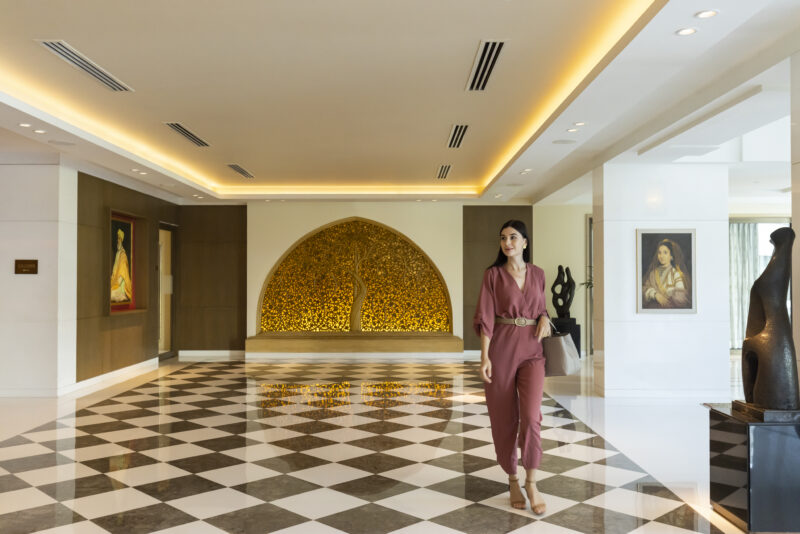
The Tree of Life, sculptured from one piece of Burmese teak
Mohan Singh Oberoi created India’s first palace hotel by converting the grand palace of the Maharaja of Kashmir. He then decided to to rival the global chains by building India’s most luxurious hotel, and the Oberoi Intercontinental opened in 1965 to worldwide acclaim.
The Beatles stayed there the following year, after trying to check-in anonymously, and to do some sightseeing on their own had to use the rear exit to escape the fans gathering outside.
In 2018, following a large-scale renovation, The Oberoi reopened as a landmark property with fewer rooms, new restaurants and the influence of top-notch hospitality designer Adam Tihany; what remains untouched is the glorious ‘tree of life’ wooden sculpture, carved in one piece from a Burma teak tree for the 1965 inauguration.
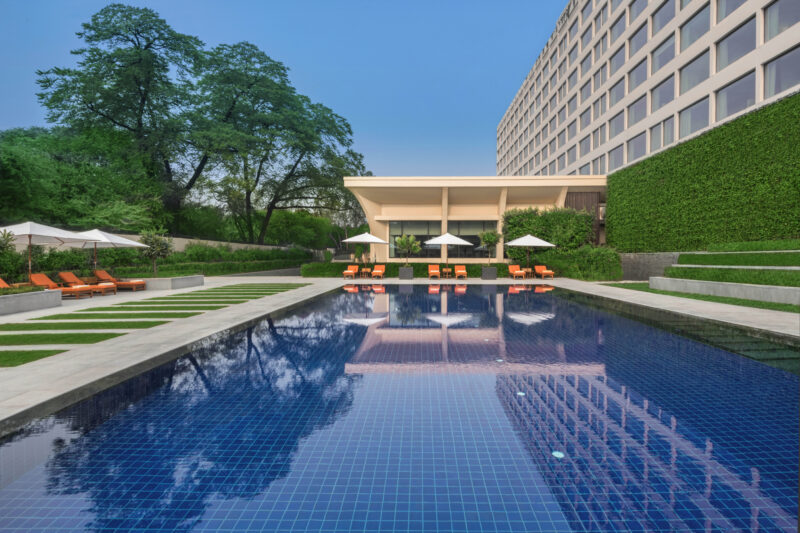
The Outdoor Pool
First impressions are important and the foyer, spacious but unostentatious, speaks clean, straight lines and easy orientation. A signboard reassuringly registers the air quality of bedrooms which, due to the hotel’s purification system, is immaculately healthy.
The rooms themselves divide into five categories, from Deluxe and Luxury –both 33m2 in size but with Luxury on higher floors with better views – to grand Suites. Premier and Premier Plus rooms are generously sized (33m2), with Plus rooms enjoying the advantage of access to the Residents Lounge.
In each of the 220 rooms, an enhanced iPad accesses everything: lighting – no more searching for that one remaining light switch that always proves so elusive – TV, blinds, the camera on the door and restaurant and spa bookings.
The Oberoi’s firm sense of luxury is consolidated by Italian marble bathrooms, teak floors, oak wood desks and pillow menus; at the back of the hotel, looking towards the Delhi Golf Club which is hidden by tree cover, there is a large courtyard framed by frangipani and, to the side, a shallow pool with sunbeds (a 20-m swimming pool is indoors).
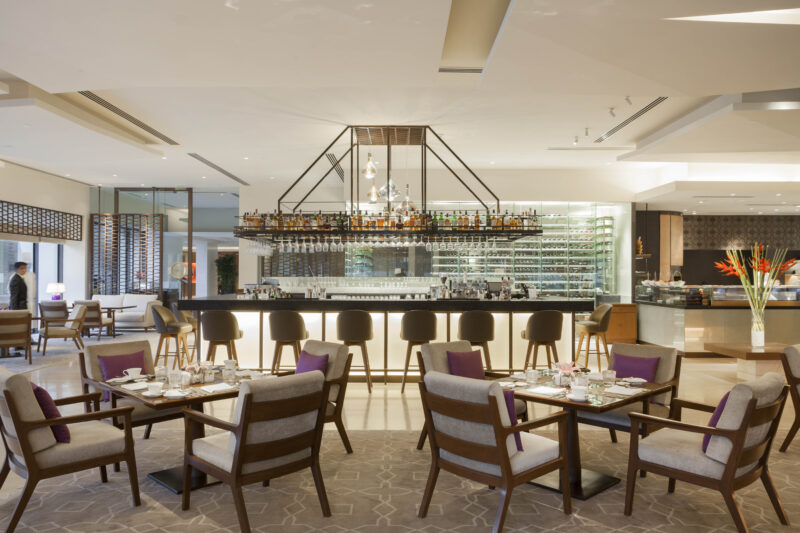
360° at The Oberoi, Delhi
Back in the 1960s, part of the hotel’s fame was its Chinese restaurant, Café Chinois, which doubled as a rooftop nightclub with a live band and dancing.
Its reincarnation, Baoshuan, keeps the classic look with dark red colours (extending to the striking bowl of red anthuriums at the entrance) and fan-shaped ceiling but dispenses with the entertainment in favour of focusing on the art of food; and, while dinner is always inside, lunch can be enjoyed at tables on the rooftop outdoors.
Mentored by chef Andrew Wong, famous for the first Michelin two-star Chinese restaurant outside of Asia (A. Wong in London), Baoshuan’s speciality is duck, including a vegetarian version, with much else to enjoy and, though the prawn crackers are not unpredictable, wait for appetisers like honey-glazed lotus roots with chilli and you know you’re in for a treat.
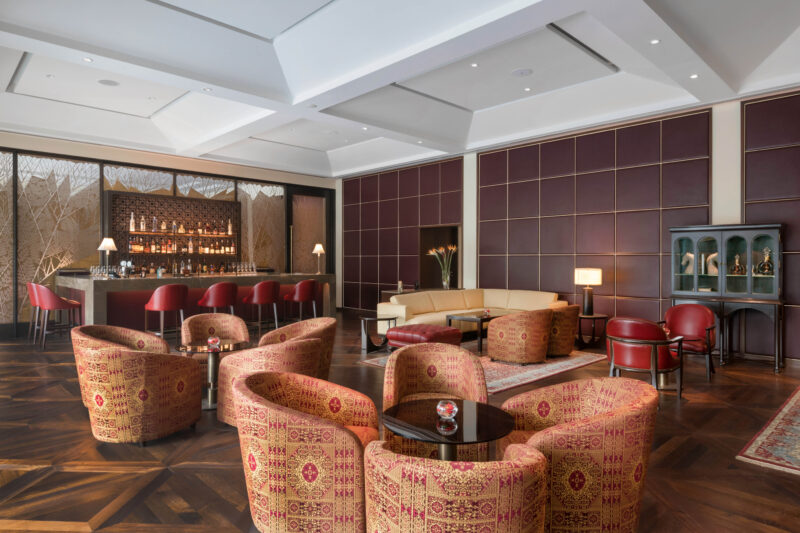
The Club Bar
Dhilli is the other star restaurant where, if sitting near the open kitchen, breads – nearly ten different kinds – can be observed being rolled out and dropped into one of three charcoal-fuelled, jar-shaped tandoori ovens. Dhilli’s set menus distil what the à la carte choices are offering: a celebration of nation-wide Indian cuisine.
Don’t expect a menu based around starters, mains and desserts but a meal could begin by arousing your taste buds with one of the chaats – traditional street food that mixes samosas, vegetables and chutneys with something crispy on top – before diving into the kababs, kormas or, under the heading Rajouri Garden (the area of the capital where Pakistani migrants settled after the partition of India), robust Punjabi fare.
For seafood specialities, look for the CR Park heading in the menu (Delhi’s Chittaranjan Park, known as C R Park, is known for its large Bengali community) where chingri (prawns in a creamy coconut stew) and doi maach (marinated fish in yogurt) are to be found.
More than a dozen colour codes are deployed to ensure that anyone with particular preferences or allergies knows exactly what goes into each dish and calories counts are included to help or hinder health-conscious diners.
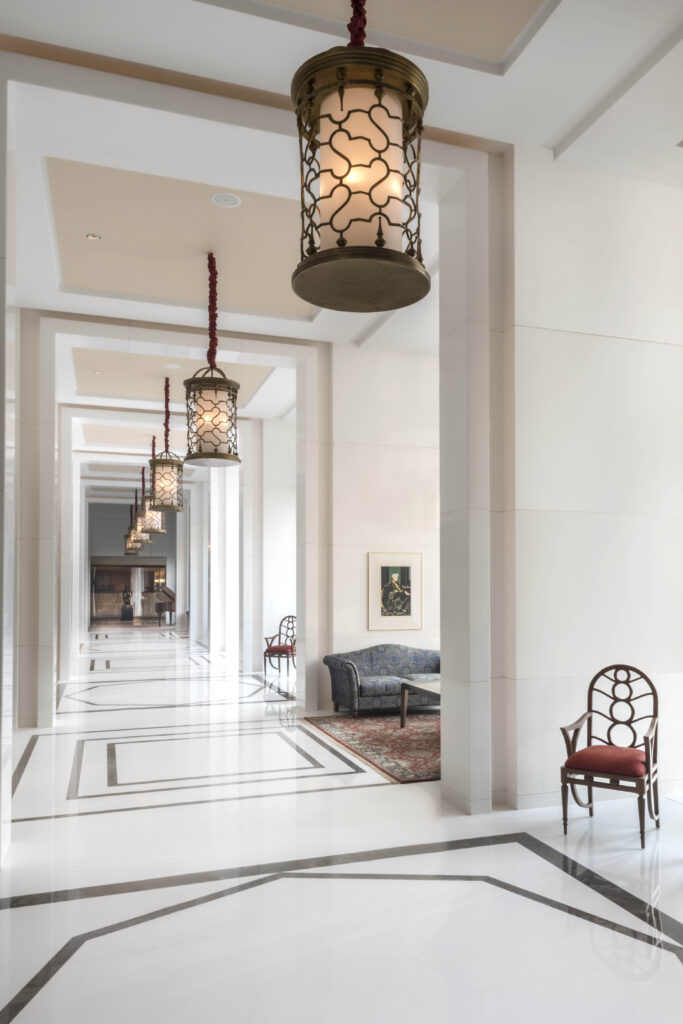
Lobby of The Oberoi, Delhi
Breakfast is served in 360° and it could be a sumptuous affair given the cooked-to-order offerings alongside a wide-ranging buffet.
The à la carte menu includes Belgian waffles, New York-style bagels, eggs cooked in nearly 20 different ways plus North and south Indian specialities (the masala uppapam should not be ignored).
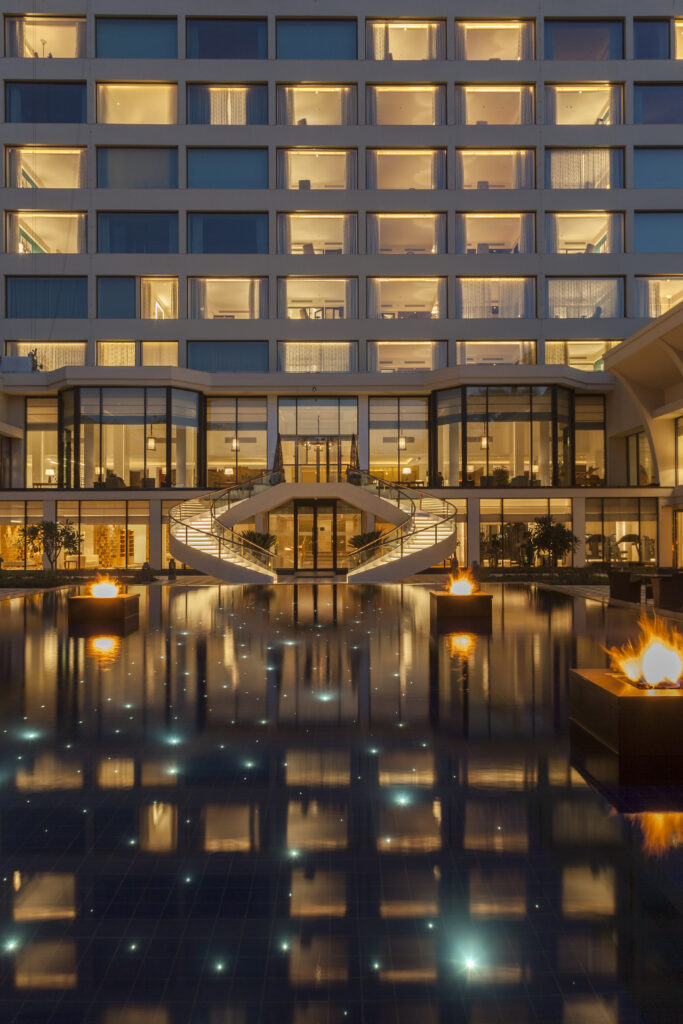
Exterior of The Oberoi, Delhi at night
Sooner or later the time comes to step outside and experience a Delhi unshielded by the hotel’s tranquillity. It will be bewildering and sensational, disorienting and stimulating – and knowing you can return to The Oberoi may make all the difference.
by Sean Sheehan
For more information, see The Oberoi, Delhi.
Various airlines fly to Delhi, including Air Astana with return economy fares between Heathrow and Delhi from £545 and the option of a stopover in Almaty from £17pp for one night and an additional £35pp per additional night, including breakfast and airport transfers.
